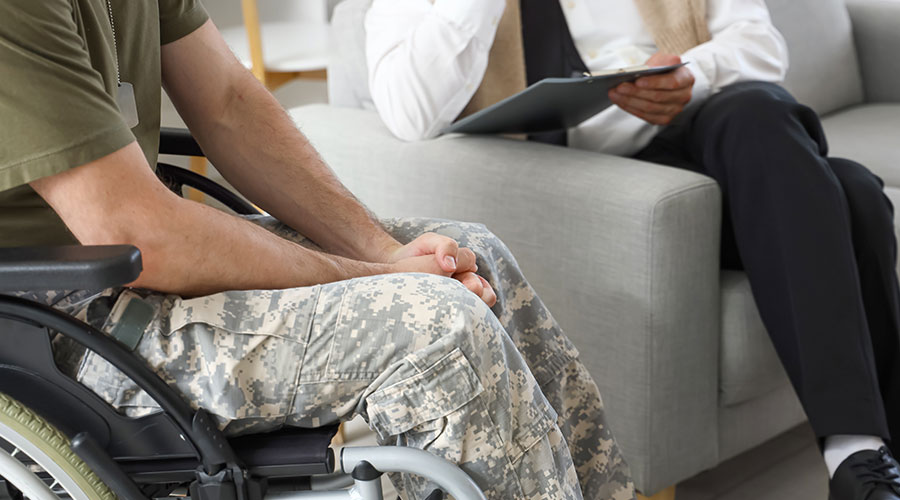At the ripe age of 18, thousands of men and women across the country enlist in the army, promising to serve and protect their country. A decision made at such a young age can have a drastic impact on one’s life, especially if they are sent into combat.
Veterans are a vulnerable group of people, and most of the time the only people who truly understand what they go through in their daily lives are other veterans. Because of this, specialty senior care facilities designed specifically for veterans have become more popular in recent years.
Healthcare Facilities Today recently spoke with Sara Malin, principal, Wold Architects and Engineers on what is needed for a veteran-specific facility and how they can ensure the safety of their buildings for this group of people.
HFT: Are there unique security needs for veterans, such as extra protection for residents with PTSD or cognitive decline?
Sara Malin: Yes, veterans can sometimes have specific security needs that go beyond traditional senior care settings. For example, residents with PTSD may benefit from enhanced privacy and controlled access to certain areas to foster a sense of safety. We implement discreet yet effective security systems, such as surveillance cameras, that respect privacy while ensuring resident safety, and we consider the emotional aspects of security as well. Veterans with cognitive decline might require spaces that allow for safe wandering or exits that are secured but not overtly locked or have safety features in inconspicuous locations, reducing the feeling of being confined while maintaining safety.
HFT: How do you ensure easy navigation and wayfinding for elderly veterans with potential visual impairments or memory issues?
Malin: At Wold, clear wayfinding is a critical design aspect, especially for elderly veterans who may experience visual impairments or cognitive decline. We use a combination of memorable color schemes, distinct art placement and strategically placed lighting and ceiling design to guide residents intuitively. Symbols, rather than words, are often employed on signage to aid those with memory issues, and personalized elements such as memory boxes outside rooms help individuals more easily recognize their spaces. This layered approach to navigation reduces confusion and enhances independence.
Related: Creating Diverse and Inclusive Senior Care Facilities: Designing for Diversity and Community
HFT: What role does signage play in helping residents feel comfortable in their environment?
Malin: Signage is an integral part of creating a sense of ease and comfort in the environment. Beyond functional use, signage should be designed to be familiar, intuitive and supportive of residents’ autonomy. We focus on incorporating signage that balances clarity with warmth, using symbols and color codes for easier recognition by those with cognitive or visual impairments while avoiding institutional overtones. Personalized signage, such as memory cues, helps residents feel more connected to their surroundings and reassures them of their place in the community.
HFT: How will you create a space that feels warm and welcoming rather than institutional?
Malin: We believe in designing spaces that feel more like home and less like an institution, specifically utilizing the small house model design guidelines established by the U.S. Department of Veterans Affairs. We use these planning principles to create the supportive environments needed for veterans' care and well-being on the interior, while the exterior of the building is customized to reflect the region and materials of the local community. We focus on natural materials, comfortable and familiar furniture and residential-scaled spaces for the overall layout. The use of warm, neutral tones, abundant natural light and biophilic design elements, like indoor gardens or views of nature, helps create a soothing atmosphere. It’s important to us that veterans feel respected, valued, and at home, which is why we work to avoid overly clinical finishes or stark, impersonal layouts.
Mackenna Moralez is the associate editor of the facilities market.

 Building Sustainable Healthcare for an Aging Population
Building Sustainable Healthcare for an Aging Population Froedtert ThedaCare Announces Opening of ThedaCare Medical Center-Oshkosh
Froedtert ThedaCare Announces Opening of ThedaCare Medical Center-Oshkosh Touchmark Acquires The Hacienda at Georgetown Senior Living Facility
Touchmark Acquires The Hacienda at Georgetown Senior Living Facility Contaminants Under Foot: A Closer Look at Patient Room Floors
Contaminants Under Foot: A Closer Look at Patient Room Floors Power Outages Largely Driven by Extreme Weather Events
Power Outages Largely Driven by Extreme Weather Events